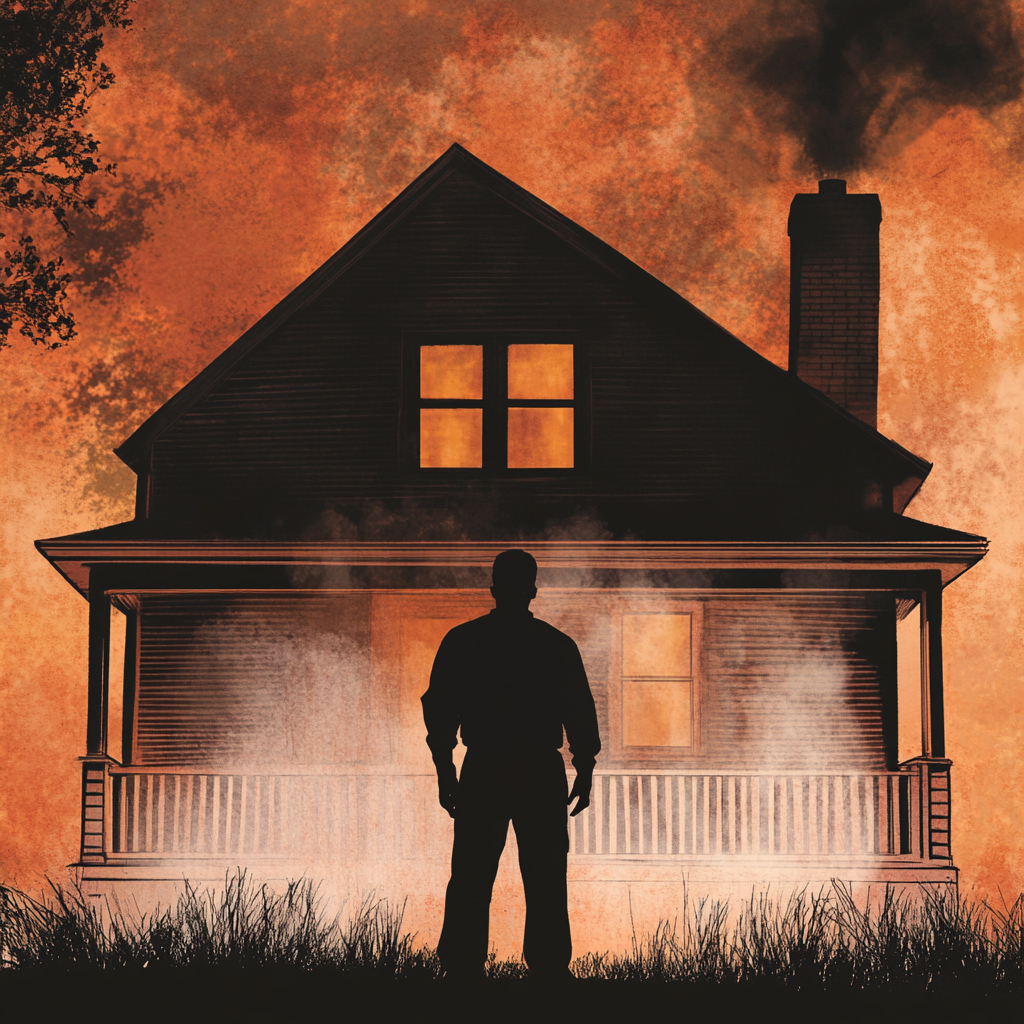Disclaimer: This post contains affiliate links. This means I may earn a commission should you choose to sign up for a program or make a purchase using my link.
Suspense is the art of creating anticipation, uncertainty, and excitement in your readers, drawing them deeper into your story with each turn of the page. Whether you’re crafting a gripping mystery, a heart-pounding thriller, or an eerie horror tale, mastering suspense is the key to delivering a story that keeps readers on the edge of their seats. In this post, we’ll explore how to build tension, create compelling characters, and weave unforgettable twists that leave readers clamoring for more.

What Is Suspense?
Suspense is the emotional pull that keeps readers engaged. It’s the lingering question of “What happens next?” or “How will this end?” that drives them forward. Unlike action, which delivers immediate excitement, suspense builds tension over time, rewarding patience with explosive payoffs.
The best suspense doesn’t just entertain. It immerses readers in the narrative, making them feel the stakes and empathize with the characters. To achieve this, you’ll need a combination of strategic plotting, compelling storytelling, and psychological insight.
1. Start with a Gripping Hook
The first few pages of your story are crucial for setting the tone and capturing your reader’s attention. A strong hook doesn’t just introduce the plot; it establishes a sense of intrigue or urgency that propels readers forward.
- Introduce a mystery: Start with a question or scenario that demands answers, like, “The man had been dead for three days, but his watch was still ticking.”
- Show danger or conflict: Open with a scene of immediate tension, such as a character fleeing from an unseen pursuer or discovering a threatening message.
- Use an unusual perspective: A unique narrative voice or an unexpected point of view can create immediate intrigue.
Your hook is your promise to the reader: “Stick with me, and you’ll be rewarded with an unforgettable journey.”
2. Develop Relatable Characters with Secrets
Suspense thrives on characters that readers care about. If your audience isn’t emotionally invested in the characters, the stakes won’t feel real. However, creating relatable characters isn’t enough—you need to add layers of mystery to their personalities and actions.
- Flawed but likable protagonists: Readers are drawn to characters with human vulnerabilities. A detective struggling with alcoholism or a single parent hiding their past mistakes creates complexity and relatability.
- Antagonists with depth: One-dimensional villains don’t create suspense; complex antagonists do. Consider giving your “bad guy” understandable motivations or even moments of vulnerability to make their actions unpredictable.
- Hidden motives and secrets: Introduce ambiguity in your characters’ actions or intentions. A loyal ally might be hiding a betrayal, or a seemingly harmless character could have a dark secret.
When characters’ true motives are unclear, readers will stay engaged, trying to uncover the truth.
3. Build an Unpredictable Plot
Predictable stories kill suspense. To keep readers engaged, you need to create a plot filled with twists, turns, and surprises. However, these twists should feel natural and earned, rather than forced or gimmicky.
How to Build an Unpredictable Plot
- Plan your twists early: Start with your story’s climax or major twist and work backward to lay the groundwork. Drop subtle clues throughout the story—foreshadowing that’s only apparent in hindsight.
- Introduce red herrings: Mislead readers with plausible but incorrect conclusions. For example, in a murder mystery, present multiple suspects with compelling motives, only to reveal the true killer was the least likely person.
- Subvert expectations: Play with genre conventions or flip common tropes on their heads. For example, the “final girl” in a horror story might turn out to be the antagonist.
An unpredictable plot keeps readers guessing, ensuring they stay engaged until the very last page.

4. Create High Stakes
Suspense relies on the perception that something important is at risk. If the stakes are too low, readers won’t feel compelled to care about the outcome. High stakes don’t always mean life and death—they can also be emotional, social, or psychological.
Ways to Raise the Stakes
- Personal stakes: The protagonist might risk losing a loved one, their reputation, or their sense of self.
- Time constraints: A ticking clock adds urgency. For example, a bomb that will detonate in 24 hours or a ransom deadline that’s rapidly approaching.
- Escalating consequences: As the story progresses, make the stakes more dire. A character might start by trying to clear their name but end up having to save the lives of others.
When the stakes are high, every decision and event becomes more impactful, keeping readers invested.
5. Master Pacing
Suspense is as much about timing as it is about content. Proper pacing creates a rhythm that heightens tension and keeps readers engaged without overwhelming them.
Techniques for Effective Pacing
- Ebb and flow: Alternate between moments of intense action or tension and slower, quieter scenes. This allows readers to catch their breath while maintaining an undercurrent of suspense.
- Cliffhangers: End chapters or scenes on unresolved moments. For example, “The phone rang. When she picked it up, the voice on the other end made her freeze.”
- Short, impactful sentences: In moments of high tension, use brief sentences and paragraphs to create a sense of urgency.
- Layered storytelling: Use multiple plot threads or perspectives to build tension in one area while providing temporary relief in another.
Balancing fast-paced action with slower, character-driven scenes keeps readers engaged and ensures that suspense doesn’t burn out too quickly.
6. Use Setting to Enhance Suspense
The right setting can amplify your story’s tension and atmosphere. Think of your setting as a character in itself. One that interacts with and influences your plot.
Tips for Crafting Suspenseful Settings
- Choose evocative locations: A shadowy forest, an abandoned hospital, or a bustling city at night can all set the tone for suspense.
- Use sensory details: Describe sounds, smells, and textures to immerse readers in the scene. For example, the creak of floorboards in a dark house can create a sense of unease.
- Incorporate the environment into the conflict: Make the setting an obstacle for your characters. For instance, a blizzard might trap a group of strangers together, forcing them to confront their secrets.
A vivid, atmospheric setting heightens the emotional stakes and draws readers deeper into the story.

7. Leverage Dramatic Irony
Dramatic irony occurs when the audience knows something that the characters don’t. This technique can create intense suspense by making readers anticipate when the character will discover the truth.
For example, in a thriller, the reader might know that the protagonist’s trusted ally is secretly working against them. As the protagonist shares their plans with this ally, readers will feel a sense of dread, waiting for the betrayal to unfold.
8. Build Tension Through Dialogue
Dialogue isn’t just about advancing the plot—it’s a powerful tool for creating suspense. Subtext, misdirection, and unspoken tension can make conversations crackle with unease.
How to Write Suspenseful Dialogue
- Subtext: Characters say one thing but mean another. For example, an antagonist might offer polite pleasantries while subtly threatening the protagonist.
- Interruptions: Break up dialogue with distractions or interruptions to maintain a sense of unease.
- Clipped responses: Use terse, vague answers to create ambiguity. For example, a character who repeatedly dodges a direct question may be hiding something.
When done well, dialogue can leave readers hanging on every word, wondering what will happen next.
9. End with a Bang—and a Question
The climax of your story should deliver a satisfying payoff to all the tension you’ve built. However, great suspense stories often leave lingering questions or hints of unresolved danger to keep readers thinking about the story long after they’ve finished.
For example:
- A thriller might end with the villain escaping justice, leaving the protagonist,and the readers, wondering when they’ll strike again.
- A horror story might conclude with the protagonist safe, only for a subtle clue to suggest the evil hasn’t been fully vanquished.
This kind of open-ended conclusion invites readers to imagine what comes next, ensuring your story stays with them.
Conclusion
Writing suspenseful stories that leave readers wanting more is both an art and a science. By crafting relatable characters, building high-stakes conflicts, and pacing your story strategically, you can create a narrative that grips readers from start to finish. Incorporate unexpected twists, leverage setting and dialogue, and don’t be afraid to leave a few questions unanswered.
Now it’s your turn. Take these tips and apply them to your own writing. Experiment with building tension, and don’t hesitate to push the boundaries of what readers expect. The more you practice, the better you’ll become at delivering unforgettable suspense.
Please feel free to share your own ideas, tips, or scenarios for others to try in the comments below. As always, Happy Writing!

Newsletter Sign-Up